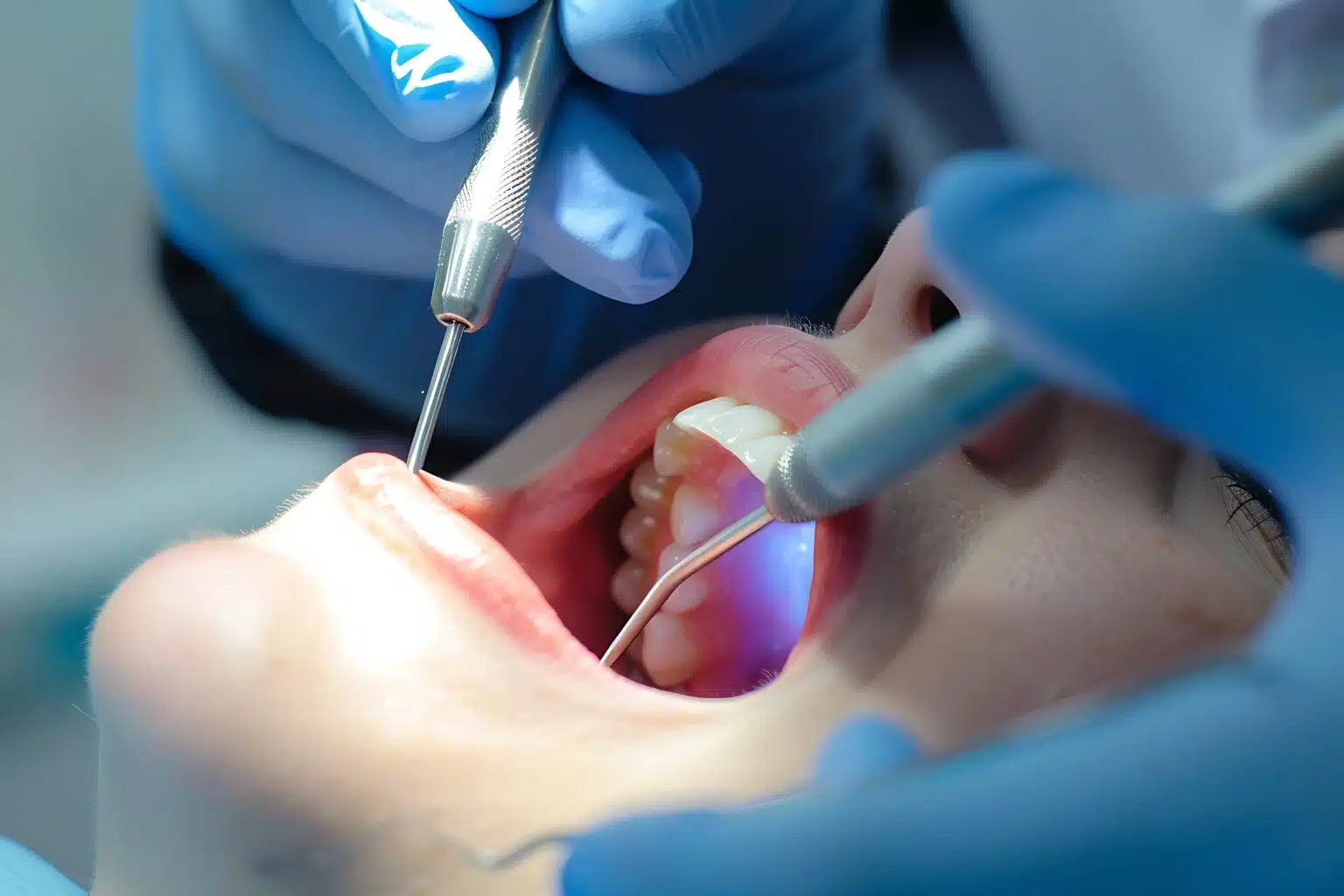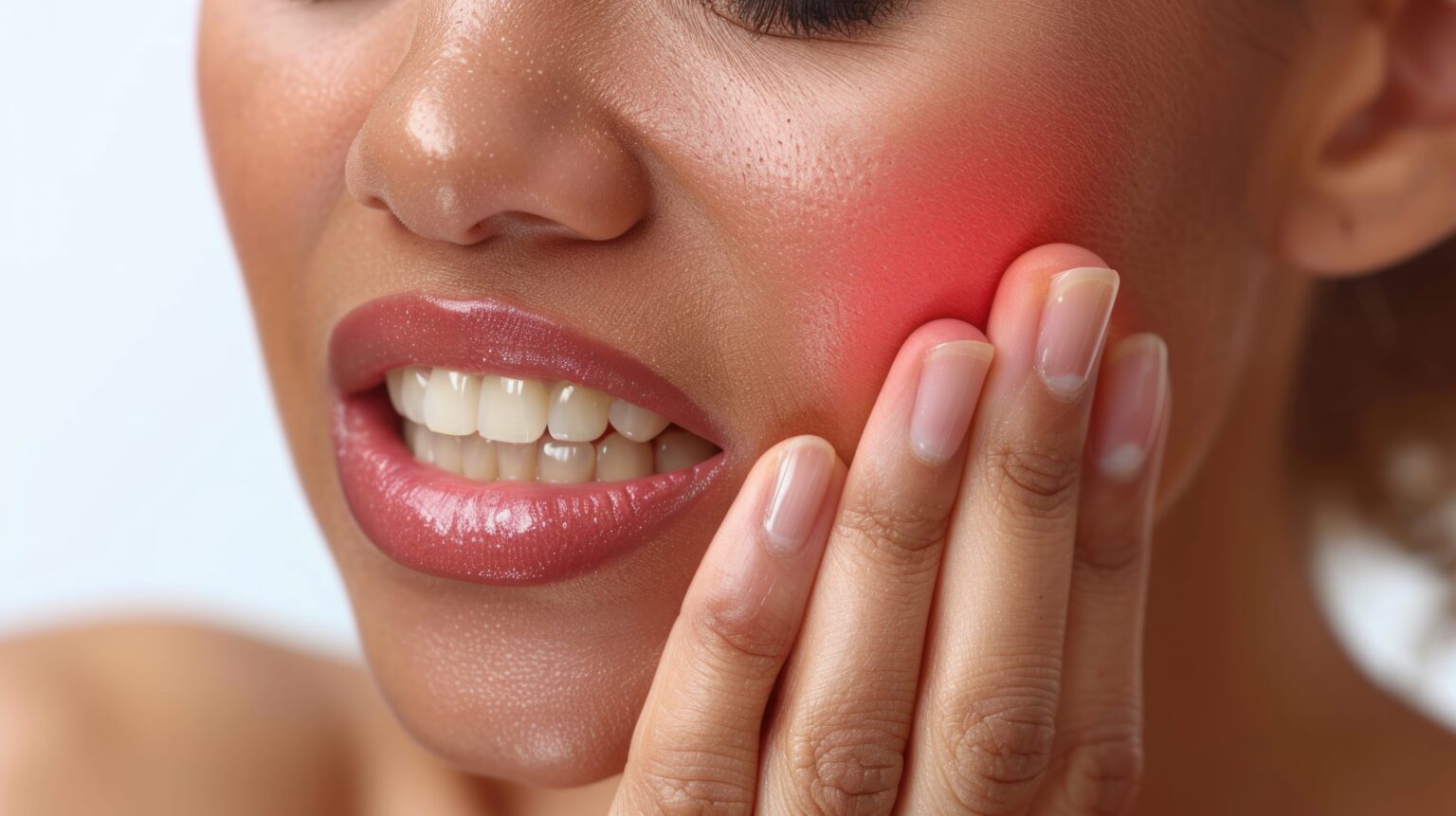Intraoral Camera
The reality is that many dental conditions don’t cause pain or visual signs that you can easily see with the naked eye. This sometimes makes it hard for patients to understand what the dentist is seeing that led to a certain diagnosis. Luckily, intraoral cameras are hooked up to a TV screen or computer monitor right next to the dental chair. That means the dentist can show you instantly what the camera sees. So, if you have swollen gums or a broken filling, you & the Murrieta dentist can be on the same page about the problem, even if you aren’t feeling any discomfort from it.
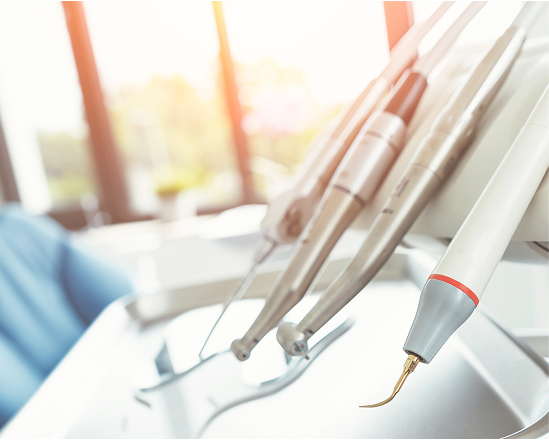
What Is An Intraoral Camera?
Put simply, an intraoral camera is a small imaging device that captures photos of the inside of your mouth. In contrast to x-rays, which can show the internal structures of your teeth & jaw, an intraoral camera shows the outside of your teeth & gums in high detail.
Compared to dental x-rays, which have been around since x-rays were discovered in the 1890s, intraoral cameras have been in widespread use only since the 1990s. Once a few dentists started using them, the rest caught on quickly, as we realized how they could revolutionize patient care & diagnosis. We consider the use of an intraoral camera at our practice to be a part of our basic equipment setup & we’re proud to have this powerful tool handy to help educate our patients & spot problems such as tooth decay & damaged teeth or restorations.
How An Intraoral Camera Works
The camera wand has the lens & a light on one end & a cord leading back to the computer on the other. The light on the camera is a very important part. Even in a brightly lit dental office, it can be hard to see in the darkest parts of your mouth. The intraoral camera’s brightly lit images help us get a better look at your teeth & gums. Many dental professionals feel this process beats traditional tools alone, such as a headlamp & a mirror, when it comes to spotting & diagnosing abnormalities.
An intraoral camera allows us to take great “before & after” pictures. This is especially useful when replacing an old metal filling (called an “amalgam” filling) with a tooth-colored filling (called a “composite” filling). You’ll easily be able to see the huge aesthetic difference using white, natural-colored fillings can make.
Images of your teeth taken with an intraoral camera can be printed out if needed, but they primarily live in the digital realm. This makes it very easy to add photos to your digital dental record. We can easily send images to other specialists who might be involved in your care, to dental insurance companies or to dental lab technicians who are helping craft a custom tooth restoration, such as a crown.
Want to see what the dentist is seeing? Just ask us to show you using our intraoral camera at your next appointment.
Meet Your Murrieta Dentist
Daniel B. Pulsipher, DDS – Daniel B. Pulsipher, DDS, is a graduate of the University of Loma Linda School of Dentistry. He has also received extensive training in cosmetic dentistry, rotary endodontics and removable prosthodontics (dentures). Dr. Pulsipher is a member of the American Dental Association, Academy of General Dentistry, California Dental Association, International Association for Orthodontics & the Tri-County Dental Society.
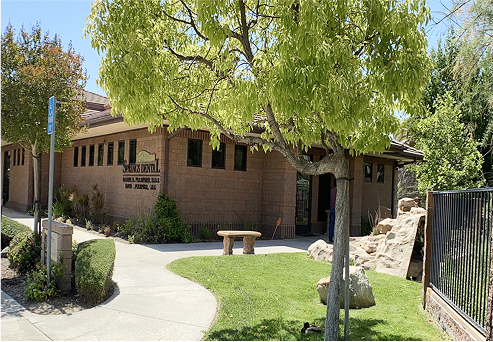





5-Star Murrieta Dental Services
We make it fun for children to visit their dentist in Murrieta.
Get relief from dental anxiety for comfortable dental procedures.
Straighten teeth with a wide-range of options from Invisalign to traditional braces.
Reshape your gum line with gum contouring to fix gummy smiles and small teeth.
Replace a missing tooth, several teeth, or an entire arch of teeth with All-on-4 dental implants.
Diagnotics and solutions for tooth and gum infections including root canals and gum disease treatment.
Visit Springs Dental

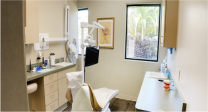

We are located in the Murrieta Springs Professional Park off Murrieta Hot Springs Road.
Hours
~ Daily lunch break 12 Noon–1pm



5-Star Google Reviews
Trustindex verifies that the original source of the review is Google. I can’t say enough great things about Springs Dental and Dr. Pulsipher! From the moment you walk in, you’re greeted with a warm, welcoming atmosphere and a team that truly cares. Dr. Pulsipher is not only incredibly skilled, but he also takes the time to explain everything and make you feel completely at ease. The entire team is professional, friendly, and genuinely dedicated to making your experience as comfortable and positive as possible. I would highly recommend anyone looking for a dentist to visit Springs Dental – you won’t be disappointed!Trustindex verifies that the original source of the review is Google. I've been a patient at Springs Dental for over 20 years. I’ve tried two other dental offices due to insurance issues, but I always come back, even when I have to pay out of pocket. Springs Dental operates with integrity, which is uncommon these days. They genuinely care about their patients rather than simply focusing on making money.Trustindex verifies that the original source of the review is Google. Great service as usual. Great staff and Dr Dan is the best!Trustindex verifies that the original source of the review is Google. Friendly staff & always with smiles to welcome their patient’s.Trustindex verifies that the original source of the review is Google. Great staff. Very thorough in all explanations of cost and procedures.Trustindex verifies that the original source of the review is Google. Great staff!!!!Trustindex verifies that the original source of the review is Google. Excellent dental care. Friendly and very competent.Trustindex verifies that the original source of the review is Google. Everyone at this dental facility treated me with so much care. I have had bad dental experiences in the past that left me terrified. I felt safe, comfortable and in capable, professional hands. This was the best dental experience I have ever had in 40 yrs! The technology in this office is like no other. They gave me a crown in a few hrs. Simply amazing! God bless Springs Dental!Trustindex verifies that the original source of the review is Google. Excellent experience!!!!
Insurance & Financing

We love your insurance and respect your budget and busy schedule. There are little to no out-of-pocket costs for most insured patients on cleanings, exams and x-rays.
0% financing is available on approved credit. While most insured families receive the majority of preventive services for FREE, we offer many different payment options, including CareCredit, so uninsured patients can still receive the dental care they need in a manner that fits their budget.
Blog Articles
Dental emergencies can strike at any time, often without warning. Recognizing the signs that require
Invisalign® aligners have become one of the most popular choices for individuals seeking discreet and
Root canal treatment is one of the most effective ways to save a tooth that
A straight, confident smile is something many people desire, but the thought of traditional metal
Just had your teeth professionally cleaned at Springs Dental? That fresh, smooth feeling you experience
What do you do when you find yourself facing a dental emergency? At Springs Dental
Frequently asked questions
How long do dentist appointments take?
Routine dental appointments, like teeth cleanings and dental checkups, take 45 minutes to an hour. Procedures like fillings, crowns, extractions, and dental implants can take up to two hours, depending on the complexity.
When should I go for an emergency dentist in Murrieta?
Come into Springs Dental for a same-day emergency dentist in Murrieta when you’re experiencing:
-
Severe tooth pain that doesn’t go away
-
A broken, chipped, or knocked-out tooth
-
Swelling in the gums, face, or jaw
-
Bleeding that won’t stop after a dental injury
-
A lost filling, crown, or dental appliance causing pain or sensitivity
-
Signs of infection, like a bad taste in your mouth, fever, or pus
If you’re ever unsure, call us and we will guide you on what to do next.
How long do dental implants last?
Dental implants can last a lifetime with good oral hygiene and regular dental checkups. A dental implant has three parts: the titanium post, the abutment, and the crown. While the post is typically permanent, the crown may need replacement after 10–15 years due to normal wear.
How long does Invisalign take in Murrieta?
Invisalign treatment takes between 6 and 18 months, depending on the complexity of your case. Mild tooth alignment issues take 6 to 12 months, while more advanced corrections can take over a year.
Do you do payment plans?
Yes, we have several options for payment plans and offer CareCredit so you never have to delay getting the dental treatment that you need.




